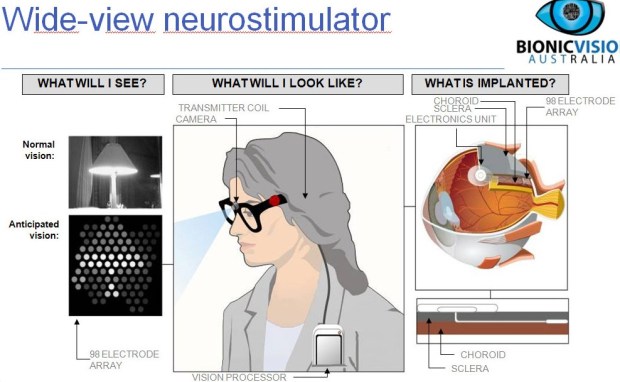
I remember the glory days of bionics… you know, when I’d see an article on bionic eyes and not think “Another one?” Because really, there are a lot out there. From homegrown products like Eyeborg and this lady’s webcam eye to more substantial efforts like Second Sight and the Boston Retinal Implant Program, it seems like everybody and their dog is whipping up some sort of vision substitution system. And my visual neuroanatomy professor said it couldn’t be done! In your face, Dr. Schein!
Anyway, the latest is an Australian company with a method that reminds me of the excellent 2002 Wired article that got me interested in this stuff: basically, you have a camera that has its signal sent to a set of microelectrodes, which in turn stimulate the retinal cells, which respond as if there is a light stimulus. Same approach as a decade ago, but hey, whatever works.
As I actually wrote in a paper some time ago, the limitations of this method are clear: it requires not only a working visual system in the brain (some people are “brain blind,” i.e. the problem is not in the eye proper) but a working retina, which can be a tall order; many accidents and disorders would preclude the usage of this method. But it’s not meant to be a universal cure, and a microelectrode array in the visual system would have to be unbelievably precise. Even with the system being proposed by Bionic Vision Australia, they can only make an array of 98 electrodes, resulting in a resolution of about 10×10. Better than nothing, but there will be jaggies.